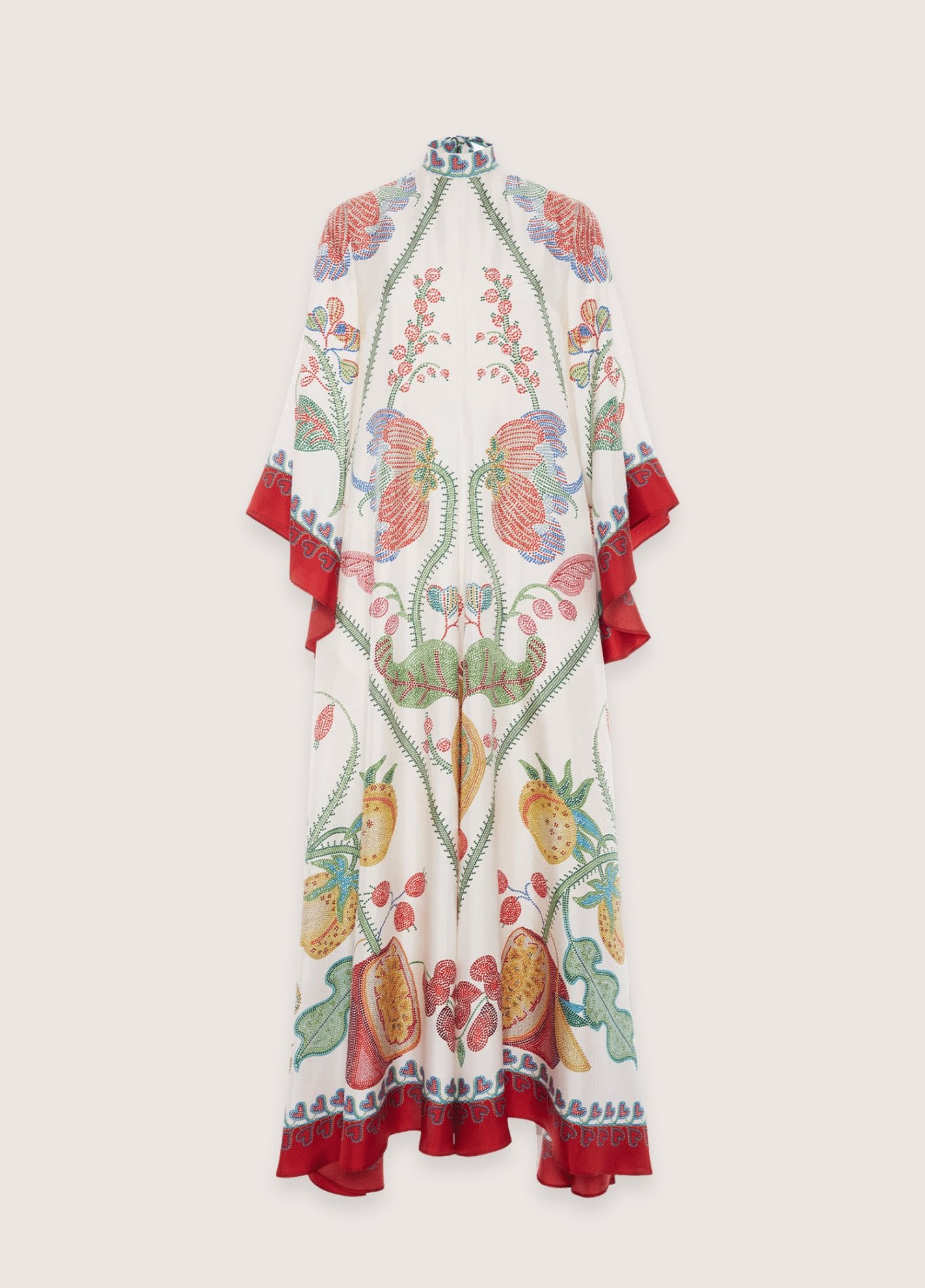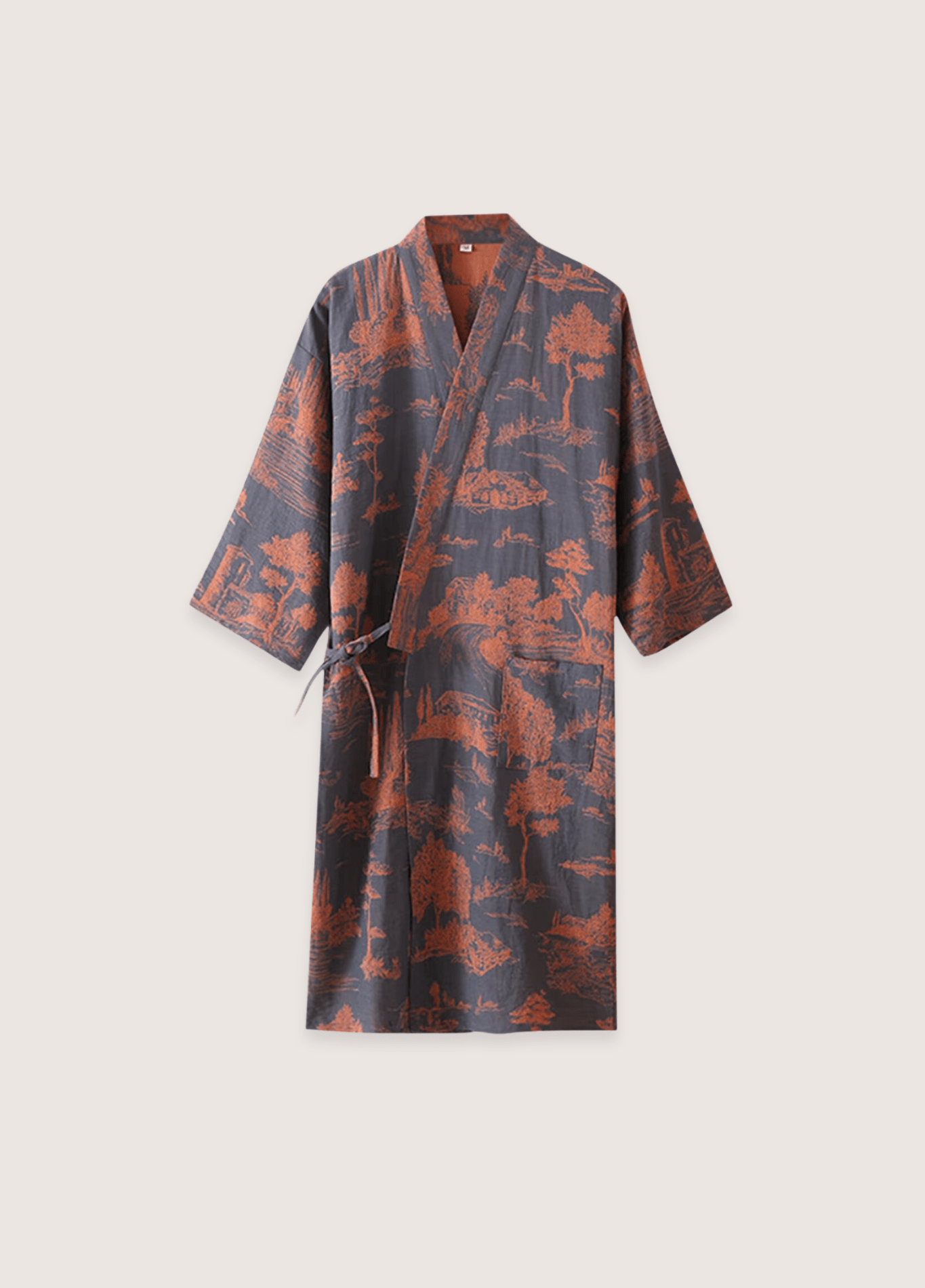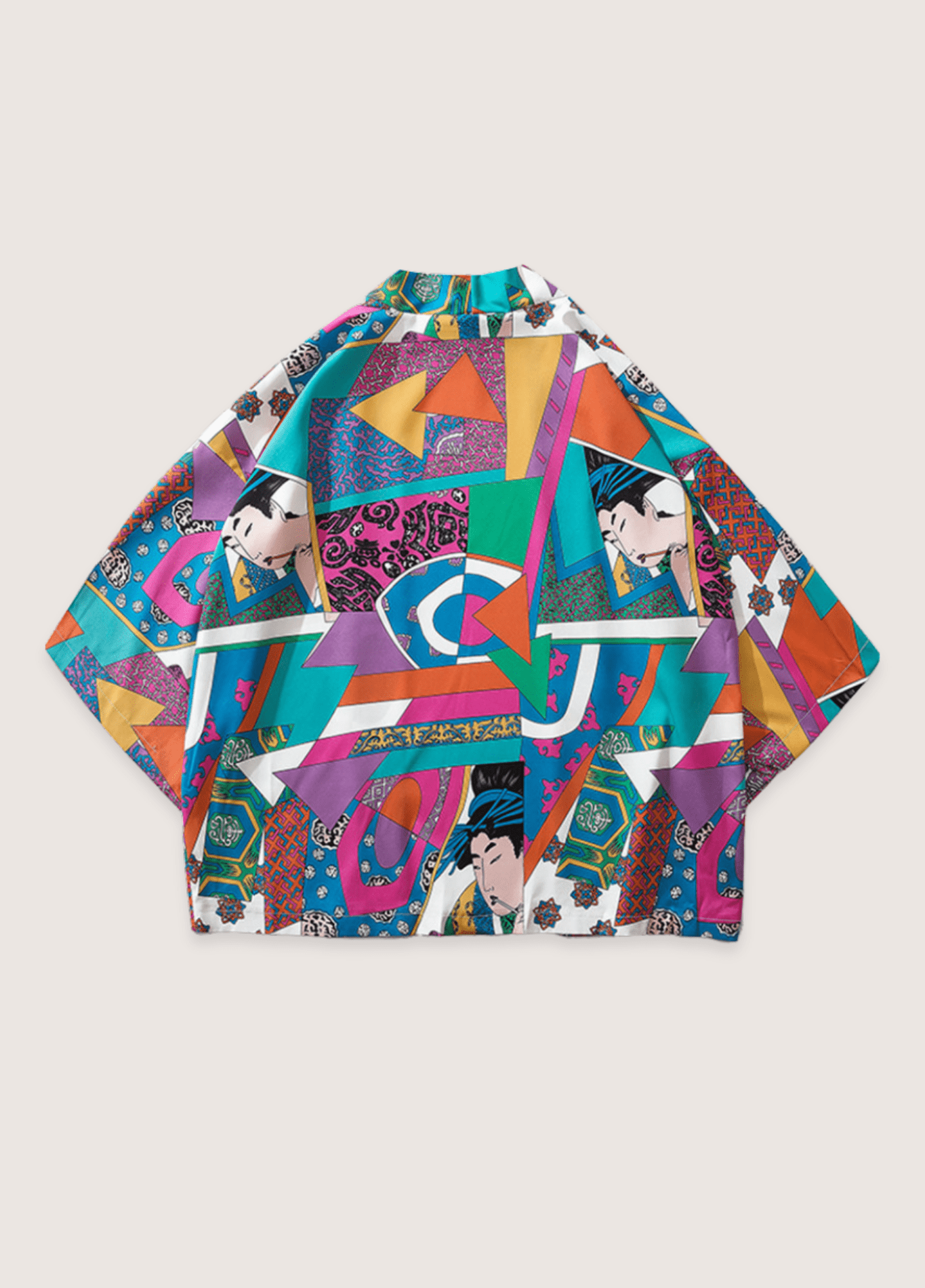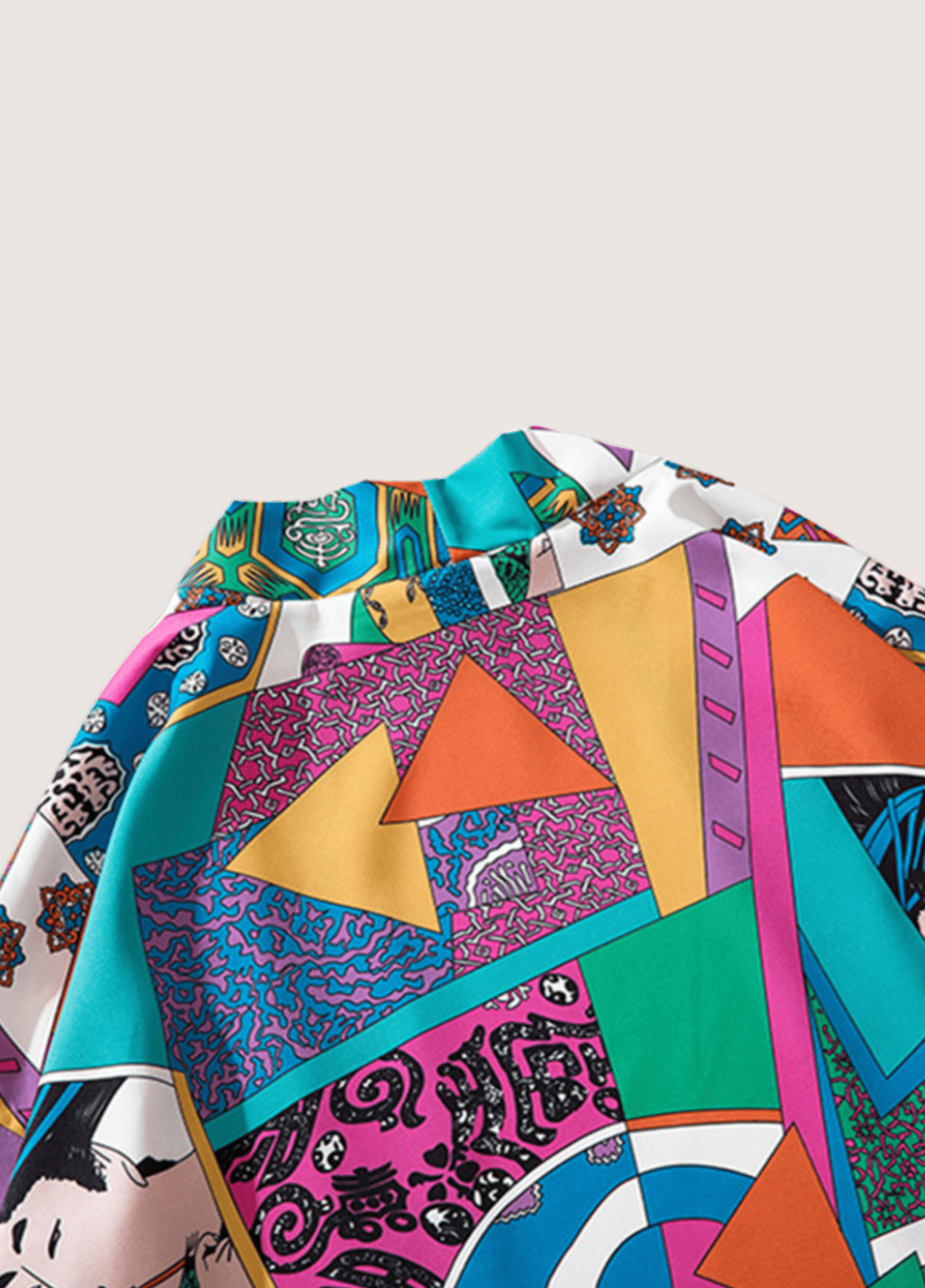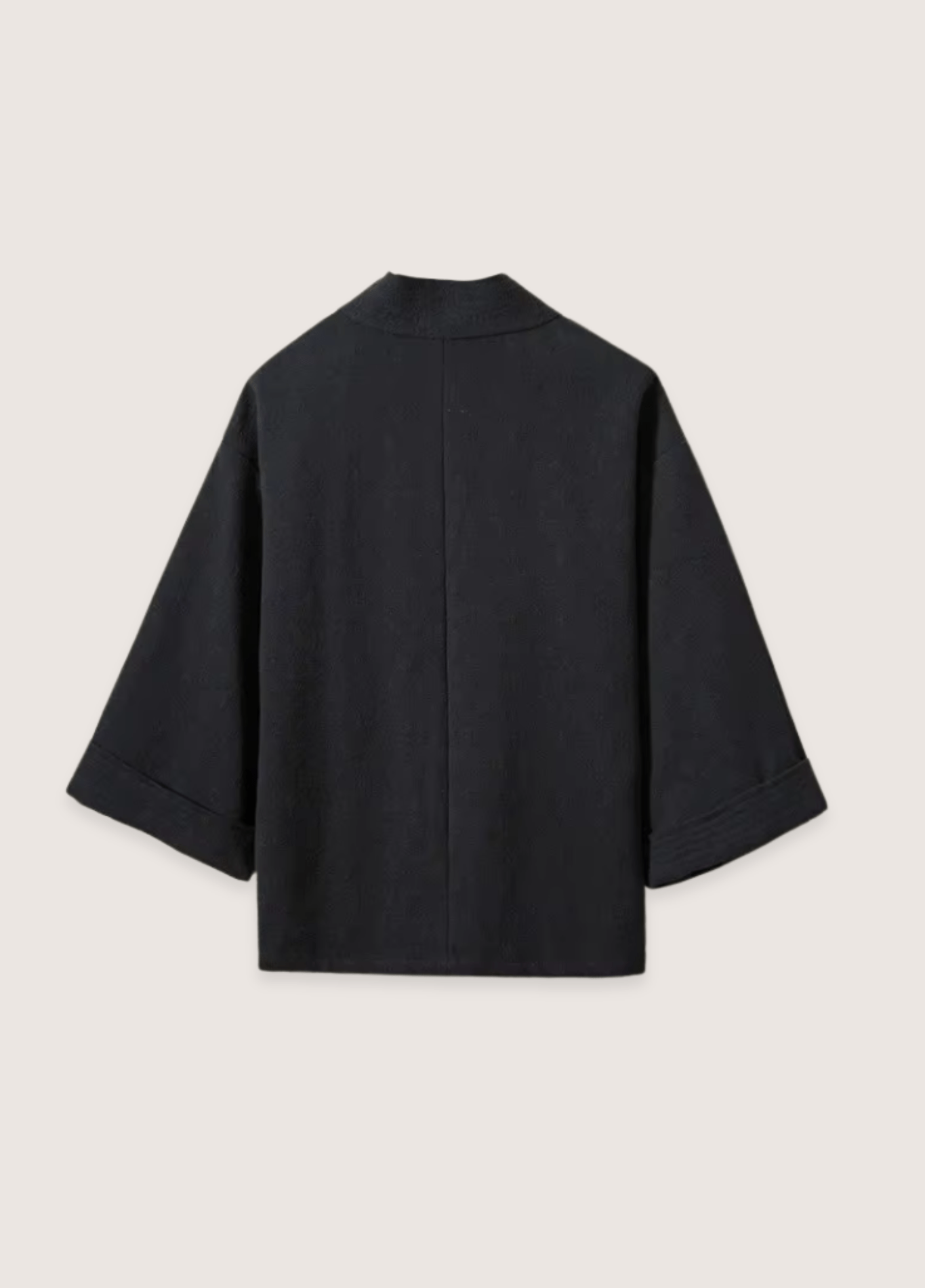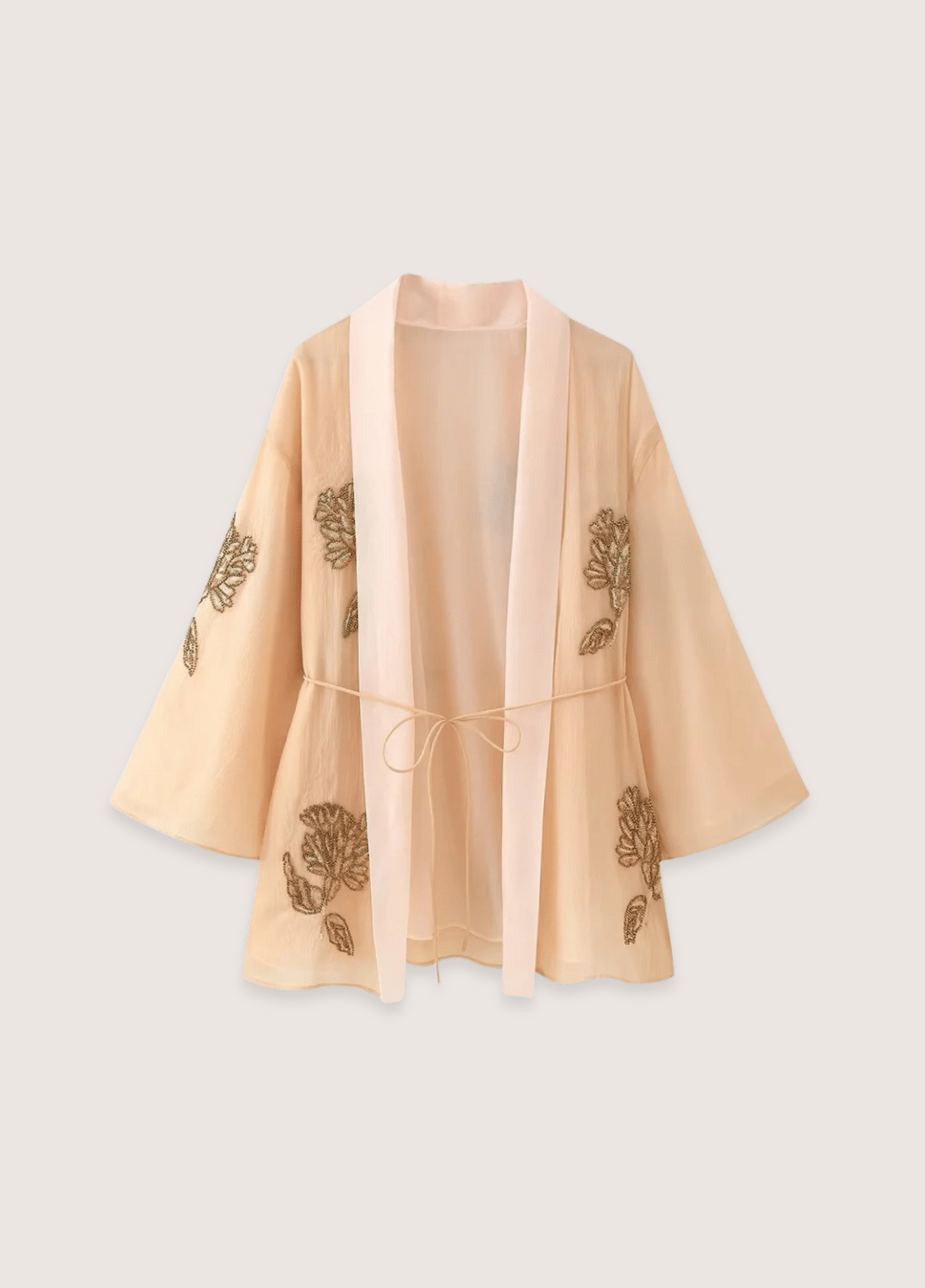While the V&A ’s remarkable Kimono exhibition has been closed due to the pandemic, the museum has shared a virtual tour, complete with in-depth commentary from curator Anna Jackson, for art and fashion lovers to enjoy from home. Discover the inspiration behind this historic exhibition. What better way to spend a weekend afternoon under the covers?
 France - January 22: Christian Dior Haute Couture Spring-Summer 2007 fashion show in Paris France on January 22, 2007. (Photo by Alain BENAINOUS/Gamma-Rapho via Getty Images) Alain Benainous
France - January 22: Christian Dior Haute Couture Spring-Summer 2007 fashion show in Paris France on January 22, 2007. (Photo by Alain BENAINOUS/Gamma-Rapho via Getty Images) Alain Benainous
Summary:
The kimono, the great debate
Kimono: from Kyoto to the parades
Cultural appropriation of the kimono
The origin of the kimono
The kimono and its evolution in contemporary fashion
The Future of Kimono
Like so many cultural debates today, it can be traced back, in some ways, to the Kardashians. In 2019, Kim Kardashian West tweeted that she was launching a shapewear line called Kimono, prompting immediate backlash from the Twittersphere. Then news broke that the reality TV mogul was trying to trademark the word kimono in the United States—and all hell broke loose. Kyoto Mayor Daisaku Kadokawa wrote a letter asking Kardashian to reconsider. Within days, #KimOhNo went viral. Even Japan’s trade minister weighed in: “The kimono is the cultural pride of Japan that we boast to the world,” he said at a press conference. “Even in the United States, the kimono is highly recognized as something Japanese.” The end result? Kardashian West apologized, changing the name of her hundred million dollar company to Skims, and that seemed to be the end of another clear case of cultural appropriation.
 A woodblock print depicting brocade patterns in the fashion of the Imperial Palace, by Utagawa Kunisada (1847-1852). Victoria and Albert Museum
A woodblock print depicting brocade patterns in the fashion of the Imperial Palace, by Utagawa Kunisada (1847-1852). Victoria and Albert Museum
The kimono, the great debate
Yet the debate over traditional Japanese clothing continued. No one thought the word kimono should be trademarked and associated with a modern version of Spanx (shaping underwear)—but there was little else people seemed to agree on. Instead, there were endless questions up for debate. What did the kimono really represent? Who was allowed to wear one, and under what circumstances? When was it acceptable to play with its established form? How should the kimono be styled in the 21st century? Why was the kimono treated as a national costume, while Western designs were labeled fashion, even in Japan? Many, it seemed, felt that the kimono should be treated with the same degree of reverence as a ceremonial object.
Kimono: from Kyoto to the parades
It is this latter notion that Kimono: From Kyoto to Fashion Shows , which opens at the V&A on 29 February, hopes to dispel. “There is a misconception in the West that the kimono has existed in the same form since its creation,” explains Anna Jackson, the exhibition’s curator, during a visit to Kyoto’s Kiyomizu-dera temple last autumn. “Nothing could be further from the truth. It is first and foremost a fashion garment, and by relegating it to museums and making it unwearable, you are denying both its past and its future.”
All around us, visitors to the sacred Buddhist site—originally founded in 778—circle the temple buildings in rented kimono, selfie sticks aloft, snapping photos of themselves against a backdrop of flamboyant maple trees. Here, at least, fears of appropriation seem nonexistent, with tourists actively encouraged to wear the garments. Notably, in his letter to Kardashian West, Daisaku proudly wrote, “In recent years, we have seen not only Japanese but also many foreign tourists wearing kimono and walking around Kyoto and cities in Japan. This is proof that kimono, which we are proud of as a traditional culture, is loved by people all over the world.”

A young woman's kimono (1905-1920), probably made in Kyoto. Khalili Collection
Cultural appropriation of the kimono
In general, though, the question of appropriation is of course at the forefront of everyone’s minds, and will no doubt fuel much of the debate surrounding Jackson’s brilliant exhibition, which traces the influence of the kimono on Western fashion – from John Galliano’s haute couture show for Dior in spring 2007 to Alexander McQueen’s kimono for the cover of Björk’s Homogenic album – as well as the dramatic evolution of the kimono itself over its 400-year history. “The Eurocentric view of fashion traces the evolution of clothing in terms of cuts and silhouettes,” Jackson points out.
"In Japan, the form of the kimono has remained virtually the same for four centuries, but the surface details have changed dramatically. This is largely what has contributed to the idea of the kimono as an unchanging national costume rather than a wearable garment influenced by trends."
The origin of the kimono
Of course, to fully understand the role of the kimono in Japan, it helps to start at the beginning. Literally meaning “thing to wear,” the kimono became standard attire in Japan during the prosperous (and deeply insular) Edo period (1603–1868)—with the ruling samurai class turning to increasingly ornate kimonos to impress the Emperor’s court. By the 1660s, a distinct fashion culture had developed in Japan’s major cities, with Kyoto becoming the center of kimono production.
Woven from delicate silk and ramie, a linen-like fabric, surviving Edo clothing features intricate and highly symbolic designs that evolved with fashions. Natural landscapes are rendered in minute detail, from peonies, roses, and chrysanthemums to whirling cranes—a symbol of eternal love given that the birds mate for life. Meanwhile, carriages, fans, musical instruments, and more served as references to classic works of Japanese literature, such as The Tale of Genji , and Noh plays.
From the beginning, however, the kimono borrowed from different cultures – despite severe restrictions on foreign trade in Japan throughout the 1600s. As early as the 17th century, the Dutch East India Company introduced Chinese silks, French brocades and Indian calicoes to Japan, all of which were translated into kimonos.

A silk crepe kosode decorated with gabions and cherry trees (1700-1750). Joshibi Art Museum
Then, in 1853, a fleet of American warships forced Japan to open its ports to foreign trade, precipitating a revolution that ended feudal military rule and began the Meiji, or “enlightened,” period. When the newly restored emperor adopted a European military-style uniform as a symbol of his global openness, his courtiers in Tokyo followed suit—until Western dress became so ubiquitous that even rural farmers wore suits, known as sebiro after Savile Row. Despite periods of revival (usually during moments of nationalist fervor), the kimono never regained its dominance, and by the end of World War II, it had been almost entirely replaced by Western dress.
The kimono and its evolution in contemporary fashion
Yet in Kyoto, the legacy of the kimono-making tradition is still strongly felt. In the textile district of Nishijin—which literally resonated with the sound of 7,000 looms during the Edo period—antique kimono dealer Konjaku Nishimura makes his living hunting down garments dating back to the 17th century. His crowded shop, part of a third-generation business, houses no fewer than 10,000 kimonos—some selling for tens of thousands of pounds. Most of them will be bought for display rather than wear. “Wearing them,” he warns, “would ruin them.”
Across town, meanwhile, Moriguchi Kunihiko produces the haute couture equivalent of the kimono for the contemporary market. Considered a living national treasure, the octogenarian runs his business from home, making just half a dozen kimonos a year in his top-floor workshop. Rather than the naturalistic patterns of the Edo period, Moriguchi is known for his abstract, geometric designs—often working on his designs “until his hands go numb” and his ego is “crushed” by the process. He relies on the yūzen resist-dyeing technique, developed after sumptuary laws in the 17th and 18th centuries banned the merchant class from wearing certain fabrics. Yet his art is under threat. After all, it’s a process that traditionally requires dyes made from spiderwort and camellia flowers, and a fixing paste derived from funori seaweed – and the network of traditional artisans he relies on is disappearing. “I’m constantly wondering what the future holds for my art,” he says.
The creative approach of fellow Kyoto-based designer Genbei Yamaguchi is equally meticulous—if more opulent. A tenth-generation obi maker, he recently hosted Giorgio Armani and a host of Chanel employees—so many, in fact, that he says he worried. “I thought, ‘Who’s running Chanel?’” he says with a laugh. In a dimly lit room on the second floor, designs that dazzle with their luxury are on display: iridescent belts woven with peacock feathers; shimmering motifs of mother-of-pearl and gold thread; and an obi featuring an exquisitely lifelike water lily, adorned with a diamond teardrop, are among the standouts. Like Moriguchi, however, he now struggles to find the hand-woven fabric he depends on; when his suppliers disappear, he will stop making obi altogether.

A man's under-kimono made in Japan from fabric made in Britain or France (1830-1860). Khalili Collection
The Future of Kimono
While the old masters of the kimono fear for their art, there is hope for a renaissance—and it lies with Generation Z, who have no memory of the kimono as streetwear. In Japan, as elsewhere, members of the younger generation are rejecting “fast” fashion, wearing vintage kimonos as a nod to their national heritage and the importance of craftsmanship, Jackson says. At the same time, many contemporary Japanese designers are trying to bring the kimono into the 21st century—rejecting the idea that it must be designed in the “fixed” style imagined in the Edo period and always worn with an obi and sandals. Many, too, resist the idea that kimonos must be handmade by skilled artisans, as in the workshops of Moriguchi and Genbei—working instead to create a market for “ready-to-wear” kimonos.
Designer Hiroko Takahashi believes that cosplay and manga are part of the reason why young Japanese people see the kimono as a garment to play with and reinterpret—a way to express personal style rather than a rigidly formal dress. “This idea that the kimono can be ‘fashion’ again comes from the streets,” she tells me in her shop just outside Tokyo, where she creates kimono prints based entirely on interlocking lines and circles rather than mimicking Edo motifs. Hiroko has her own reasons for challenging the world of rigid, traditional kimono manufacturing: as one of the few female designers, she had trouble finding artisans willing to work with her when she was starting out—some dyers simply hung up when she tried to contact them by phone.
Y & Sons is another example of a brand trying to make the kimono more wearable for everyday use. Made with a mix of European and Japanese fabrics, its minimalist designs are meant to be worn with sneakers.
“Our goal is to respect the history of the kimono but adapt it to the modern lifestyle,” explains founder Takayuki Yajima.
He has previously collaborated with Scandinavian brand T-Michael in Bergen, Norway, on a menswear collection and with Snow Peak on a range of waterproof kimonos. “Wearing a kimono today to meet your friends is still a bit like showing up with a radical haircut, but the mentality that it’s something unusual is gradually starting to change.”

An ink hanging scroll, titled 'Kaidan' – meaning staircase – by Kobayakawa Kiyoshi (1899-1948).
In the capital’s upscale Ginza district, by contrast, Tokyo Fashion Week regular Jotaro Saito is taking his own approach to liberating the kimono at his luxury boutique – arguing for his designs to be recognised as fashion in the same way as a Chanel dress or an Armani suit rather than as some kind of symbolic garment. He made headlines a few years ago when he first sent denim versions of the kimono down the runway – a pointed statement about its versatility. Now, he’s looking forward to this year’s Tokyo Olympics, which he hopes will bring the many ways the kimono can be designed and worn to a global audience.
"The kimono cannot just belong to Japan, or it will disappear. It is not a ceremonial garment. It is fashion; it always has been. And fashion is for everyone."
Translation of the article Vogue : The Kimono, The Catwalk & The Great Cultural Appropriation Debate written by Hayley Maitland


